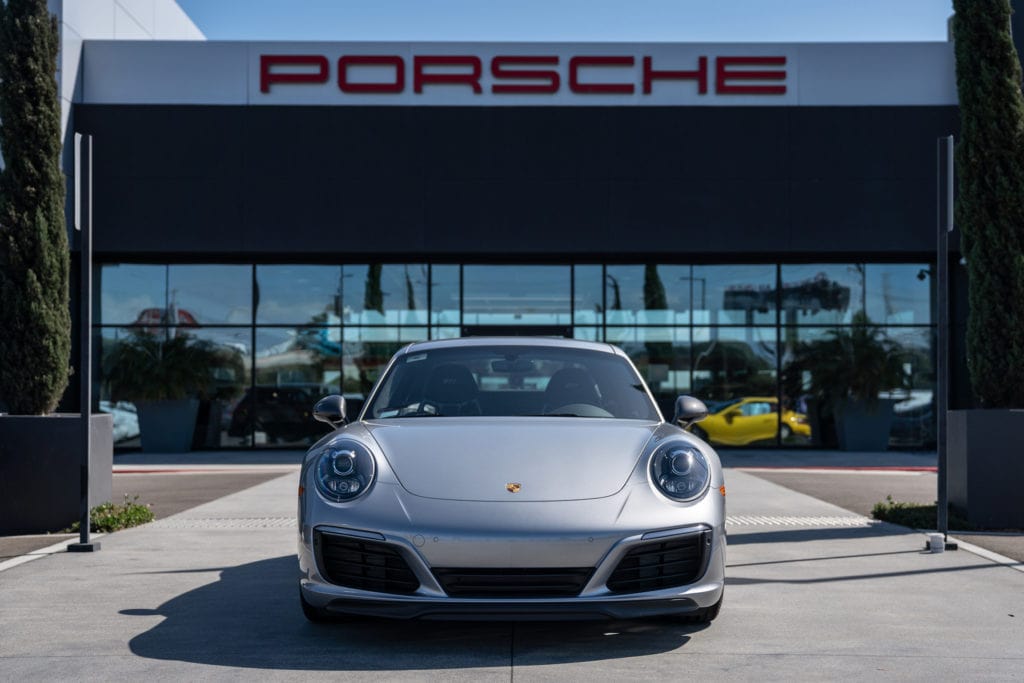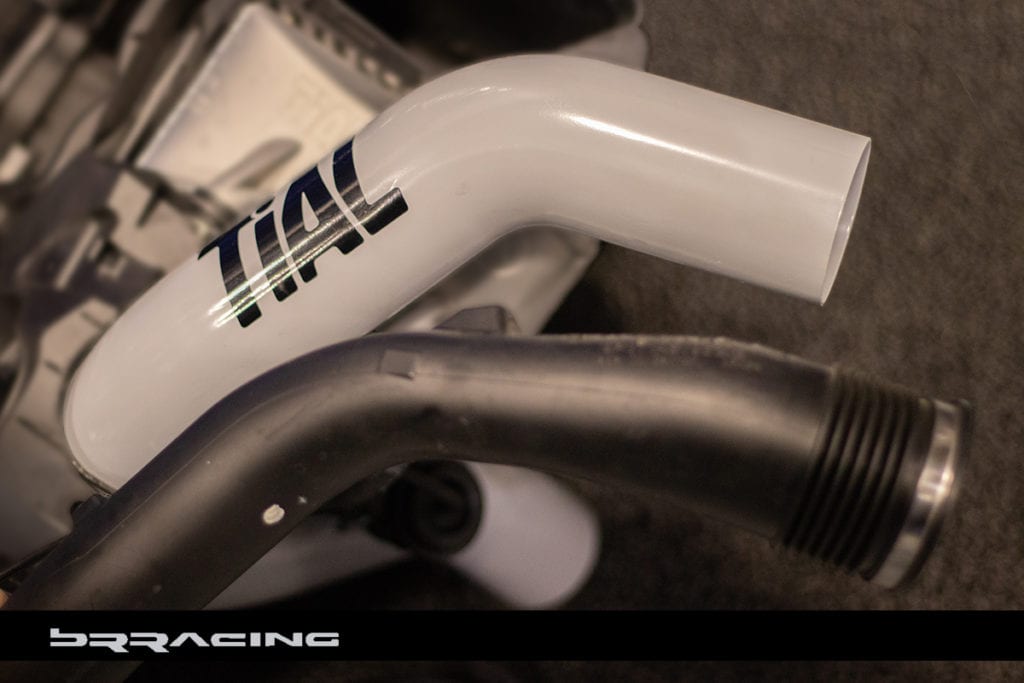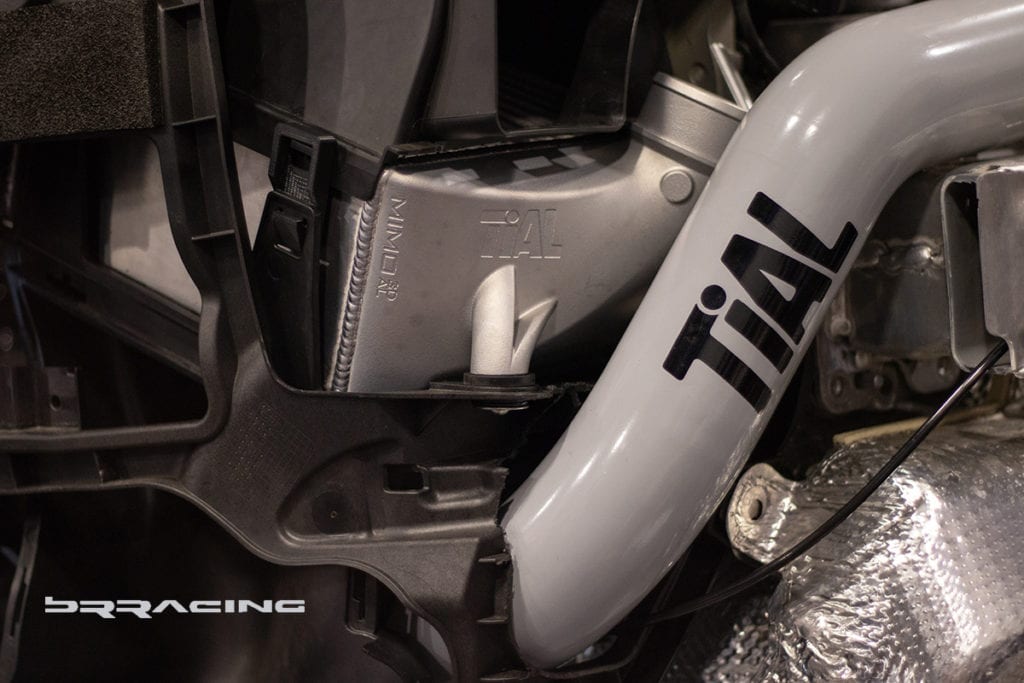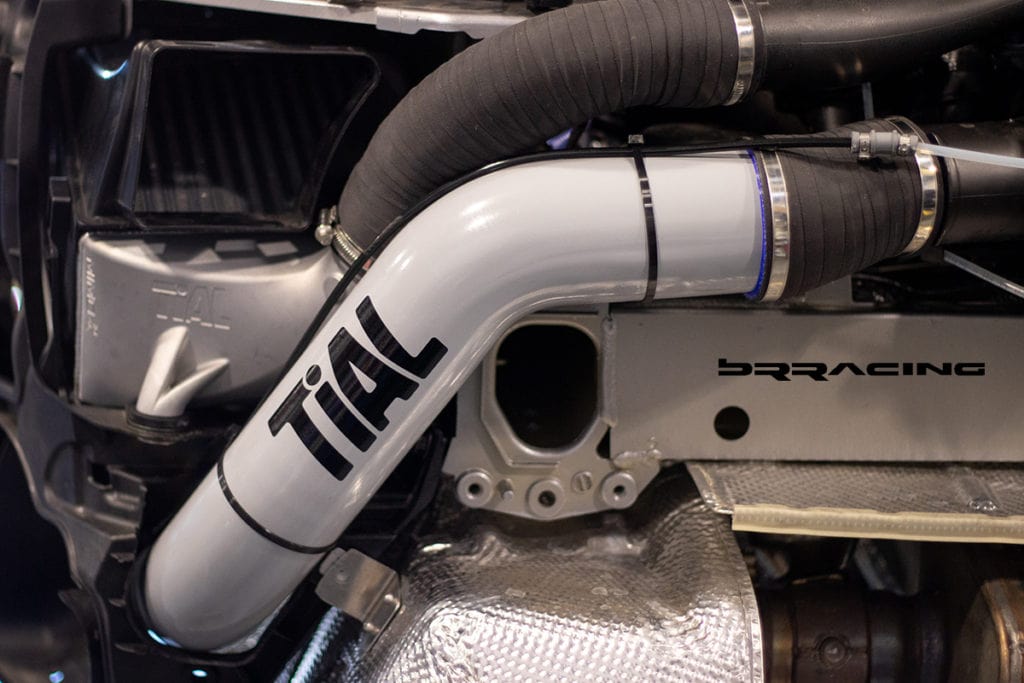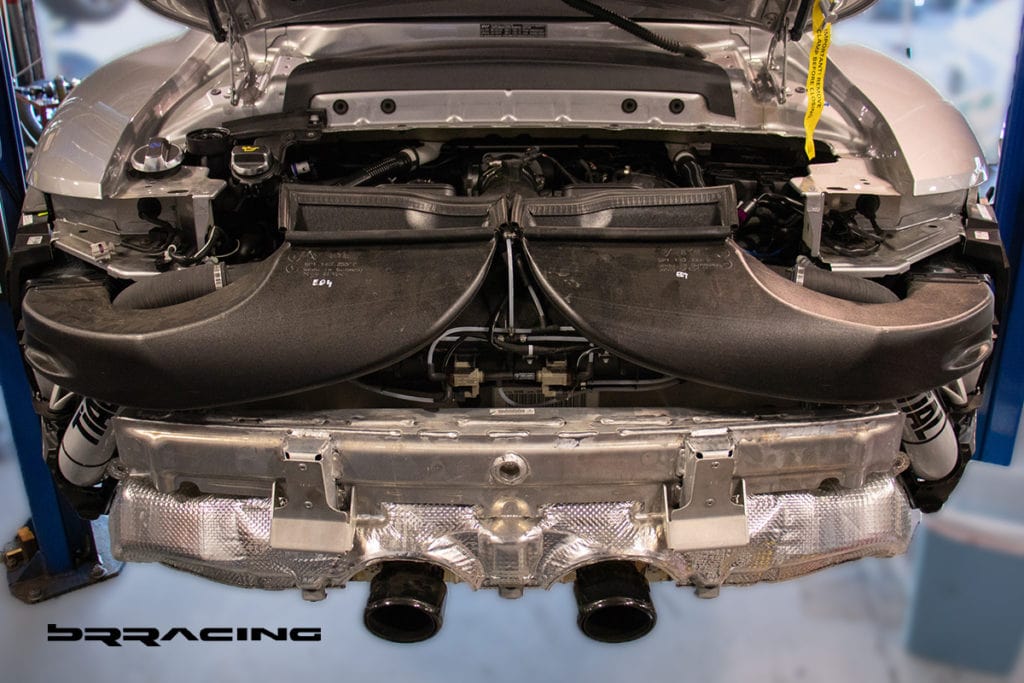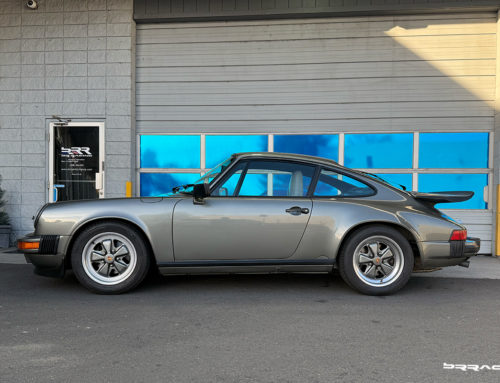Porsche 991.2 911 Carrera T – MORE POWER

It’s not often that we get the chance to have timing work perfectly for a combination of a new project, a brand new car, and brand new technology. But that is the case with Josh’s new Porsche 991.2 Carrera T, and one that was custom ordered. This is not Josh’s first Porsche, so he knew exactly what he wanted when he custom ordered the new car, and was able to take delivery at the Porsche LA Experience Center.
What an amazing canvas to start with. A custom ordered Carrera T, w the Carbon Fiber sport bucket seats, manual transmission, steel brakes. Josh’s last car was a Porsche 996 GT3… but he saw something special in the new turbo engined Carrera…could it be even more than a current gen GT3? Ahhhh….the basis for the project. The new turbo engine brings lots of promise, and we have seen from some of our other recent Porsche 991.x Turbo or Turbo S projects, that there is a lot of potential lying within.
As mentioned at the start, it’s not often that the timing for a project also coincides with the launch of new technology and performance products. But that was the case here, as TiAL (a reknown developer of turbo base engine performance products) was starting to bring to market a whole new range of 3D printed products, and ones that allowed a whole new level of enhancement and refinement.
While on paper the new turbo based engines offer a lot of headroom, the packaging itself and complexity required to implement a total solution were the hurdles to be overcome. We often see aftermarket performance product manufacturers take a piece meal approach as well…introducing a piece of the solution, but not addressing the whole. TiAL took a view at the whole…and brought all the pieces together, which in the end, produced massive gains. But lets take a look at the constraints and the complexity that must be addressed:
This is the view from below of the new Porsche Carrera twin turbo based engine. While much the same, at the same time, differences exist in almost all areas. Realize the pieces that must be addressed, at least for this first phase of the project, are the intake, intake plenum, intake tubes, intercoolers, turbos, cooling, and software. Where the complexity of the packaging can start to be understood is the view of the topside w the bumper cover removed.
In the image above, we can start to appreciate the amazing job Porsche has done to cram all the pieces into the rear of the car, and yet find ways to develop a new standard in power and torque. Unlike the Porsche 911 Turbo and Turbo S, flow must be incorporated into the rear of the car for the intercoolers and intake (whereas on the Turbo / Turbo S, there are the front intake ducts into the leading edge of the rear fenders). While hard to identify all the pieces in the image above, the big ducts are the air leading to the intercoolers, and the exit of that air to the lower edge of the rear bumper cover, yet you can also see the intake tube from the air filters to the turbo, and the turbo intake output tube that leads back to the intake throttle body. The “cage” the surrounds all of this also forms the sub-structure for the rear bumper cover. Care needed to be taken to find ways to optimize the flow, cooling, boost, and yet, maintain this cage.
Here is another view…this time w the Intercooler ducts removed to show the intake and turbo output tubes.
 TiALtook full advantage of the “total design” approach, and didn’t just think about designing some new products, they did the research into where the limitations existed, and then, how could they be optimized.
TiALtook full advantage of the “total design” approach, and didn’t just think about designing some new products, they did the research into where the limitations existed, and then, how could they be optimized.
INTAKE PLENUM
Lets start with the intake plenum. Huge benefits existed here, whereas, the actual intake manifold did not show to be the limiting factor. To validate that, they “flow tested” all elements. Here is the stock intake plenum installed on the flow bench, to create the baseline.
In the image above, you can see where a flow bottleneck exists. The numbers proved this as well. Using laser mapping to understand the space requirements and limitations, a new intake plenum was designed. Here is an image of the new intake. Take special note, this is NOT a cast part, as was the method of production in the past. This is an ALUMINUM 3D printed part. This allows even further optimization of the design of the part, not just for fast prototyping, but in the actual manufacture of the part as well. The insides of the new intake are perfectly smooth, all elements have been refined, not like the old “CAST” method of production.
Size, flow, fitment were all optimized. Yet, it is a true “plug and play” replacement. Mates perfectly to the stock intake manifold, and has the perfect face to match to the throttle body. Again, this is a complete 3D printed solution. Just amazing.
But, they didn’t just produce a pretty part, they tested it as well, and compared the results of the new design against the baseline of the stock unit. Unlike prototyping in the past, 3D printing allows time and expense to try various approaches, and using full CFD flow analysis, there is no guess work involved….CFD shows you the flow, and the flow bench validates the results, not just hypothetical results. Here is the new intake plenum being flow tested as well.
With the new part, we can start the assembly of the new solution. Here is the new intake plenum installed to the intake manifold. OH MY, what a BIG MOUTH you have oh new intake!
Look at how smooth and perfectly curved the new intake plenum is. WOW!
Next, let’s attach the current Porsche throttle body.
The next part of the puzzle or total solution needed to be the intake tubes. If you are going to optimize the power of a turbo solution, you need to feed the turbos more air, as they are going to product more boost…and you then need to optimize the flow of the increased boost to the intake…and, along the way, cool the turbo output thru the intercoolers. So, in looking at the OEM solution, the intake tubes were way too small to accomplish the goals.
INTAKE TUBES
While visual evidence again existed…you can see that the current intake tubes were a bottleneck, TiAL took a proper full design approach. They again used lazer mapping to understand the space constraints, and to map the attachment points so that the new solution would also be “plug and play”. Here are the images of the intake tubes, also made of aluminum.
For those of us that have been in this business for a while, these new parts are truly amazing and a marvel. The design, flow, and weight are exactly what you would want. No tradeoffs, no downsides. They mate perfectly as they should, no special accommodation needed in the install. Sensors are located in the perfect location.
Is there really a difference….both visual inspection and testing bare that out…here is a visual view of the stock intake tube, and the new TiAL tube. You can see how the stock intake tube constrains the incoming air flow…almost choking it off.
But, the real test is in the flow bench test and CFD analysis. You want the color to be Green or Blue….
Moving on to the next piece in the puzzle….the Intercoolers. This piece has some of the hardest design elements….must fit into the OEM cage / location, must provide for existing sensors, and must solve two (2) flow issues. Both increase the flow of the cooling air that passes thru the intercooler that accomplishes the thermodynamic heat transfer, and yet, must optimize “delta T” and “delta P” for the boosted turbo output air. Most other Intercoolers mainly solve only a partial solution here, and are not fully optimized. They may also improve or reduce “heat soak”, but the goal is overall increased performance, not just reduced heat soak.
INTERCOOLERS
Again, TiAL took full advantage of laser mapping to determine the fit, space, and layout constraints. There is a lot here in the complexity of the design…the plastic cage that holds all the pieces together and in proper location, and that also serves as the superstructure of the rear bumper cover.
Yet, at the same time, some learning from Porsche is also possible here…to see what they did between the 991.x Turbo, Turbo S, and finally, the GT2RS, Porsche themselves identified some of the solution.
Here are the new Intercoolers. One of the old fluid dynamic rules is that any 90 degree change in direction of a fluid flow results in upwards of a 12% loss of pressure. There are a ton of Intercoolers in the market today for all sorts of turbo based solutions, and you can usually instantly tell which ones have been properly designed versus those that have not, just by looking at the Intercooler end tanks. TiAL used the new 3D printing solution to fully optimize the production of their Intercoolers. Just look at the end tanks alone!
TiAL maintained the complete plastic cage, and came up with amazing unique 3D printed “clips” to allow the same superstructure to be used, but since the IC are thicker, it created these clips to allow the structure to be extended. As a result, the IC’s fit perfectly. Amazing, creative.
HOSES
What we appreciated here, in working w TiAL, was the complete attention to detail First, it was the completeness of the solution, next it was the design and manufacturing methods to fully optimize the solution, not just doing it, but getting the most from the upgrades. That even included the hoses. Most aftermarket turbo manufacturers realize that stock hoses can not cope, nor last, under the higher boost loads. But, TiAL went farther, not only producing silicone & reinforced hoses, but incorporating the hose ID and OD into the design…such that there are no “separation” or vortices induced into the flow due to the mismatch of the hose and elements, and disruption of the flow. Finally, they incorporated elements that ensure the hoses will fit, and stay attached.
Notice as well…they didn’t just produce silicon hoses, they double wrapped them, both for heat protection, and to eliminate expansion under load or boost. The outer covering also ensures long life, as they will be cutting, wearing through, or coming apart.
So, how do all these pieces fit together? Just like they were designed from the factory. This is product eye candy in the full sense….not only functional, but truly beautiful. There is some trimming of the plastic cage and surrounding plastic elements, but that’s only natural to fit larger parts.
INTERCOOLER / INTAKE INSTALLED
This first image shows the new TiAL intercooler, complete plastic cage, and the new TiAL intake tubes. (blue tape still on inlets for protection during install). OH MY…look at the size of the intercoolers…WOW.
Closer view of the intercooler, and plastic extension clips holding the intake duct to the intercooler. OH MY, look at the size of those intake ducts. This is design for serious amounts of power!
TURBO
The piece that most projects focus on when building more power from a turbo based engine are the turbos themselves, and these certainly got the full consideration here too. But, they were designed with specific specs, gains, objectives in mind….not just bigger. TiAL implemented them in two parts…part was to use the existing housing, but change the internals and the impeller / compressor wheel, the other was to make a complete new housing on the exhaust side to maximize the results. In other words, get the exhaust impeller to spin faster, quicker…get the intake impeller to produce more boost and to spin faster. The other part, to ensure they fit in exactly the OEM position, location, mounts. The new turbos (which are slightly different side to side, the right and left looking similar, but due to the cooling lines, mounts, diverter valves and actuators, are not) bolt right in, along with the cooling lines and fittings. The simple answer, yes, the turbos are bigger
Since there’s nothing that we need to do to units, lets get them installed
Now that we have the turbos in….lets start getting the rest of the elements installed (NOTE – this is a California car, so, for the time being, we are staying with the stock OEM catalytic convertors. Another part of the solution coming is the replacement of the stock exhaust manifolds). The new Porsche OEM cats are much larger than before, and don’t provide as much blockage as in the past.
FINAL INSTALLATION
Now, the remaining pieces can be added, the intercooler / intake tubes / bumper cage, and the hoses connecting them all.
Everything in…except the intercooler ducts. Intake, intake plenum, turbo output tubes, intake tubes, turbos, intercoolers, vacuum lines, sensors, stock cats and exhaust.
Now, below, the intercooler intake ducts in place. Tight fit. Just the mating of the intercooler ducts, the air intakes / air filter to the rear deck lid is amazing.
TUNE
Having all the new pieces in place is nice…great…amazing….great fit…but, to make them all sing, you need a custom tune to take advantage of all of this. Cobb Tuning already has an “off the shelf” tune available for this car (and many other Porsche’s). Just plug the Cobb AccessPort into the car, learn the base configuration (and save the base file), upload the Stage 1 tune, and you’re done.
COMPLETE
At this point…we are only running a custom Stage 1 tune. The Stage 2 custom TiAL tune is in development, and will be installed soon. The target for the Stage 2 tune is 700bhp…..Yep…you read that right, 700HP.
The result, even w the standard Stage 1 tune, is amazing. NO turbo lag, torque on tap at almost any RPM, power all the way thru the RPM range. Exhaust sound / tone is better. No downsides, unlike most other major turbo upgrades…..WE LOVE IT.
AND, there is more to come.
BRracing – producing smiles for miles.


